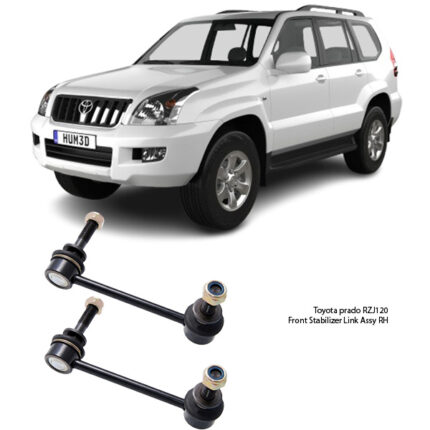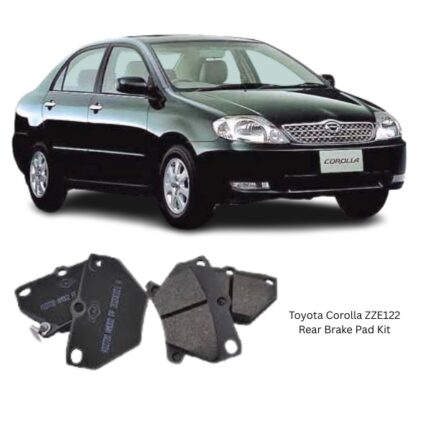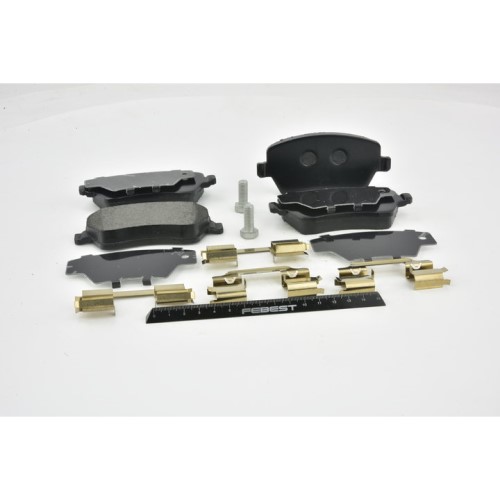Get Nissan March / NP200 Front Brake Pad Kit 2401-CLIF in Kenya
A brake pad kit is an essential component of a vehicle’s braking system, crucial for ensuring safe and effective stopping power. Brake pads are the parts of the brake system that make contact with the brake rotors to create the friction needed to slow down or stop the vehicle. A typical brake pad kit includes a set of brake pads, shims, clips, and sometimes additional components necessary for a complete brake job. Understanding the components and functions of a brake pad kit, along with proper maintenance practices, is essential for maintaining optimal braking performance and safety.
Components of a Brake Pad Kit
A comprehensive brake pad kit generally includes the following components:
- Brake Pads: The primary components that press against the brake rotors to create friction and stop the vehicle. They are usually made from various materials, including organic, semi-metallic, and ceramic compounds.
- Shims: Thin layers of material that sit between the brake pads and the brake caliper. Shims help to reduce noise and vibration during braking, providing a quieter and smoother operation.
- Clips and Springs: These components secure the brake pads in place within the caliper and help maintain proper alignment and movement. Clips and springs are critical for preventing excessive movement or rattling of the brake pads.
- Wear Indicators: Some kits include wear indicators, which are designed to make a noise when the brake pads are worn down to a certain level, alerting the driver that it’s time to replace the pads.
- Lubricant: Special brake grease or lubricant is often included to apply to specific areas to reduce noise and ensure smooth operation of the brake components.
Functions of a Brake Pad Kit
Each component of a brake pad kit plays a specific role in the overall braking system:
- Friction Generation: The primary function of the brake pads is to generate friction against the brake rotors, which converts kinetic energy into thermal energy, slowing down the vehicle.
- Noise Reduction: Shims and lubricants work together to minimize noise and vibrations during braking. This results in a quieter, smoother braking experience.
- Pad Retention and Alignment: Clips and springs keep the brake pads securely in place and ensure they move correctly within the caliper. Proper alignment is crucial for even wear and effective braking.
- Wear Monitoring: Wear indicators provide a visual or auditory warning when the brake pads are nearing the end of their useful life, prompting timely replacement and maintaining safe braking performance.
Importance of Brake Pad Maintenance
Regular maintenance of brake pads and the associated components is vital for the safety and efficiency of the braking system. Here are key aspects of brake pad maintenance:
- Regular Inspection: Periodically check the thickness of the brake pads and look for any signs of uneven wear or damage. Inspect the rotors for grooves or warping, which can affect braking performance.
- Timely Replacement: Replace brake pads before they are worn down to the metal backing. Driving with excessively worn pads can damage the rotors and increase stopping distances.
- Proper Installation: Ensure that all components of the brake pad kit are correctly installed. Misaligned pads or missing clips can lead to noise, vibration, and reduced braking efficiency.
- Lubrication: Apply brake lubricant to the specified areas to prevent squeaking and ensure smooth operation. Avoid contaminating the brake pads or rotors with grease.
- Balanced Braking: Replace brake pads on both wheels of an axle simultaneously to maintain balanced braking performance. Uneven braking can cause handling issues and increased wear on suspension components.
Replacement Process
Replacing brake pads involves several steps to ensure the new pads function correctly and safely:
- Lift and Secure the Vehicle: Use a jack and jack stands to lift the vehicle and secure it safely. Remove the wheels to access the brake components.
- Remove Old Pads: Unbolt the caliper and remove the old brake pads. Inspect the caliper and rotor for damage.
- Install New Pads: Apply lubricant to the necessary areas, place the new shims, and install the new brake pads. Ensure clips and springs are correctly positioned.
- Reassemble and Test: Reassemble the brake components, reinstall the wheels, and lower the vehicle. Test the brakes by gently applying pressure while driving at a low speed to ensure proper function.
Follow us on Facebook for more parts.




